Is Your Cookbook Giving You Food Poisoning
 Some people are just natural in the kitchen. But for many, cooking can be quite overwhelming.
Some people are just natural in the kitchen. But for many, cooking can be quite overwhelming.
It’s one of the reasons why the cookbook industry is a multi million dollar one!
They just simplify everything.
They tell you what to do, when to do it, and most even have handy images so you can be sure you are on the right track.
What’s not to love about them?
Here at Chef Remi, we advocate home cooking, and anything that helps people cook real food, instead of buying processed rubbish, is a good thing.
So we were surprised to be told of a damning study by the British Food Journal which claims that 92% of cookbooks do not give enough information on food safety habits.
Researchers chose 29 cookbooks, all of which have appeared in the New York Times bestseller list (therefore not some obscure recipe books!)
Out of the compiled 1497 recipes, only 89 provided the correct cooking temperatures of foods!
This really concerned us!
Many cookbooks were telling their readers to check for ‘doneness’ of meat by checking that the juices run clear – a terrible bit of advice!
The reason why raw meat has a red or pink color is because of a molecule called myoglobin. The theory behind checking for clear juices is that myoglobin loses its color when heated.
However, the point it changes color can change.
For example, we’ve cooked chicken breast to 155°F (well under the 165°F recommended by the United States Department of Agriculture) and the juices have been clear.
Another chicken breast was cooked to 170°F, over USDA’s guideline, and yet it oozed pink juices!
What does USDA recommend?
Never listen to any cookbooks when they give you arbitrary ways of checking the doneness of meat.
There is NO WAY to check for doneness through skewering, pressing on meat for ‘springiness’, or any other way you might have heard.
The only way to know for sure that meat is done is to check its internal temperature using a cooking thermometer.
We’re glad the British Food Journal have shone some light on this subject.
No wonder so many people out there think a cooking thermometer is something that’s just for Thanksgiving. They’re being misinformed by all these cookbooks!
To help you, we’ve added USDA’s handy chart – print out the image and place on your fridge door, or anywhere you’ll see it in your kitchen.
And then get yourself a good cooking thermometer!






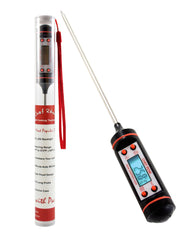

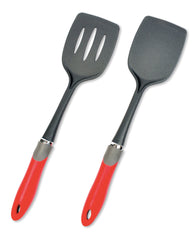
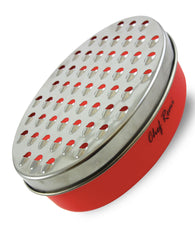
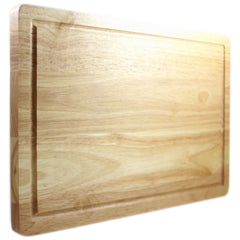
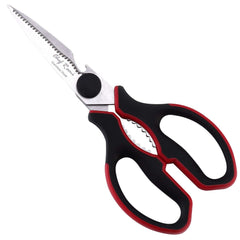
Comments
Jake13#1
I’ve went through some of my grandmothers cook books and there are several recipes that don’t give good enough instructions to check meat or even some of the baked goods. There was also one that nearly had you leave the chicken raw after “cooking” it.
Bob#2
Being someone who is constantly watching their protein intake, I consume a lot of meats. Although I do no necessarily get food poisoning, this blog is very helpful so that I do experience future problems.
Michael McKeever#3
I really appreciate this post. I always hate it when when i’m trying to follow a recipe and the instructions become vague on how to tell when a food is properly cooked. Also thanks for posting USDA chart! I’ll print it off and post it somewhere in my kitchen.
Sam #4
Well i have heard about this before but not too much but when i go through this whole thing i found that this is true in some cases and it totally depends upon us . Stay fit Stay healtly .
Kayla #5
I made gumbo from a cookbook I got from the dollar store. Don’t judge me. Well i used all the types of seafood, crab, oysters, scallops and shrimp it was good at the time eating it. But the next day me and my daughter were so sick. I followed the directions but dealing with seafood no safety tips inside.
Amber#6
Such a helpful post. I am definitely one of those people that have assumed a thermometer is for Thanksgiving dinner only. I do not have one in my kitchen and although I have luckily not encountered food poisoning I am terrified of chicken and contracting salmonella or serving meat to guests without it being fully cooked, and the worst is to serve a piece of meat that has been cut several times and looks butchered. I think my best bet is to get a thermometer and follow the recipes internal temp suggestion. Thanks so much for this! I think this is an important post for anyone in the kitchen to know!